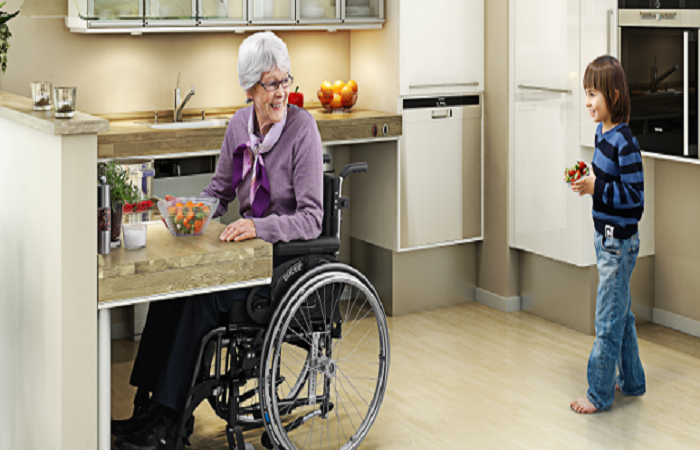
Creating a Disability-Friendly Home: Empowering Accessibility and Inclusion
A home is more than just four walls and a roof; it’s a haven of comfort, security, and self-expression. As society becomes increasingly aware of the diverse needs of its members, the concept of a disability-friendly home has gained prominence. Designing a space that caters to the needs of individuals with disabilities not only enhances their quality of life but also promotes inclusivity and a sense of belonging. In this article, we’ll explore the essential elements of creating a disability-friendly home.
Mindful Layout and Navigation:
A disability-friendly home begins with a layout that facilitates easy movement. Consider implementing an open floor plan that minimizes obstacles and allows for unobstructed navigation. Wider doorways, hallways, and clear pathways can accommodate mobility aids like wheelchairs and walkers. If steps or stairs are present, installing ramps or lifts can be crucial for those with mobility challenges.
Accessible Entrances:
The entrance to a home should be universally welcoming. Installing a ramp with a gentle slope, non-slip surfaces, and handrails can make entry smoother for wheelchair users or individuals with limited mobility. Lever-style door handles are easier to operate than traditional knobs, providing a more accessible option for those with dexterity issues.
Adaptive Technology:
Incorporating smart home technology can greatly enhance accessibility. Voice-activated assistants, smart lighting, and automated thermostats can be controlled without physical effort, benefiting individuals with mobility, vision, or cognitive impairments. These technologies not only make daily tasks easier but also foster independence.
Bathroom Accessibility:
The bathroom can pose significant challenges for individuals with disabilities. Installing grab bars near the toilet and in the shower can provide much-needed support. A roll-in shower with a bench, a handheld showerhead, and non-slip flooring can create a safe bathing environment. Lever faucets and easily accessible storage solutions ensure a more user-friendly experience.
Kitchen Adaptations:
A well-designed kitchen can promote independence in daily tasks. Lower countertops, pull-out shelves, and easily reachable storage can make cooking and meal preparation more manageable. Installing appliances at appropriate heights and considering clearances for wheelchair users are essential steps toward inclusivity.
Flooring Considerations:
Flooring plays a significant role in accessibility. Opt for smooth, slip-resistant surfaces throughout the home. Eliminate thresholds or use gradual ramps between rooms to prevent tripping hazards. Carpeting should be low-pile to ease mobility aids’ movement.
Color and Contrast:
Consider using color and contrast strategically to aid individuals with visual impairments. High-contrast elements, such as dark doorframes against light walls, can make doorways more noticeable. Braille labels on switches, appliances, and doors can further enhance accessibility.
Comfortable Furniture:
Investing in comfortable and supportive furniture is crucial. Chairs and sofas with appropriate height and cushioning facilitate easy seating and rising. Additionally, furniture arrangement should allow enough space for wheelchair maneuverability.
Communication and Safety:
Emergency communication is vital for everyone. Install smoke detectors with flashing lights or vibrating alarms for those with hearing impairments. Ensure clear communication methods are available, such as whiteboards or communication boards for individuals with speech difficulties.
Personalization and Empowerment:
Ultimately, a disability-friendly home should reflect the individual’s preferences and needs. Involve the person with disabilities in the design process to ensure the space is tailored to their requirements. This personal touch empowers individuals and fosters a sense of ownership.
Creating a disability-friendly home is not only a matter of physical adjustments but also a commitment to social inclusion. By embracing thoughtful design principles and considering the unique needs of individuals with disabilities, we can create spaces that prioritize accessibility, comfort, and empowerment. As we continue to move towards a more inclusive society, the concept of a disability-friendly home stands as a testament to our dedication to ensuring that every individual feels valued and respected in their living environment.






